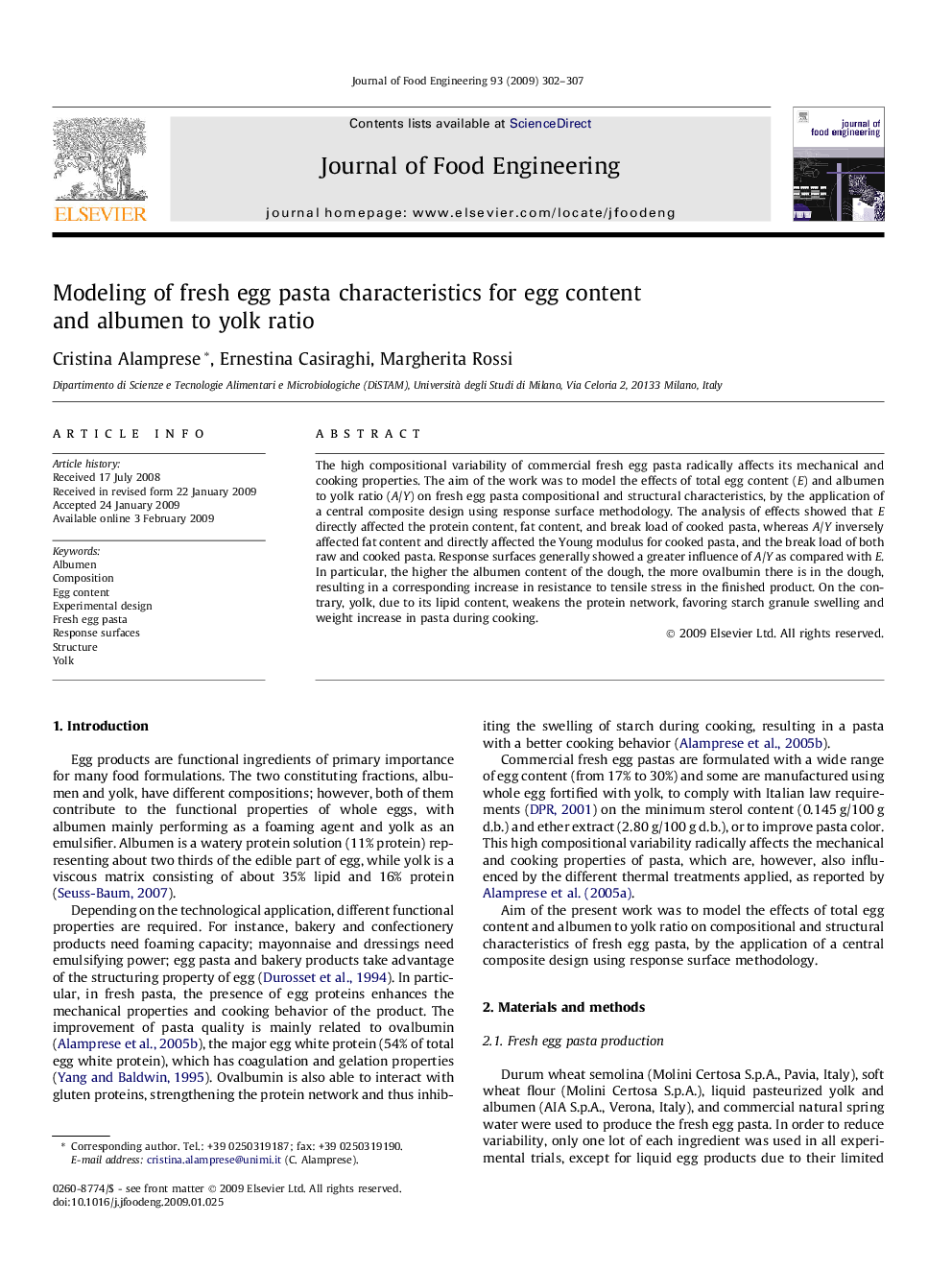| Article ID | Journal | Published Year | Pages | File Type |
|---|---|---|---|---|
| 224519 | Journal of Food Engineering | 2009 | 6 Pages |
The high compositional variability of commercial fresh egg pasta radically affects its mechanical and cooking properties. The aim of the work was to model the effects of total egg content (E) and albumen to yolk ratio (A/Y) on fresh egg pasta compositional and structural characteristics, by the application of a central composite design using response surface methodology. The analysis of effects showed that E directly affected the protein content, fat content, and break load of cooked pasta, whereas A/Y inversely affected fat content and directly affected the Young modulus for cooked pasta, and the break load of both raw and cooked pasta. Response surfaces generally showed a greater influence of A/Y as compared with E. In particular, the higher the albumen content of the dough, the more ovalbumin there is in the dough, resulting in a corresponding increase in resistance to tensile stress in the finished product. On the contrary, yolk, due to its lipid content, weakens the protein network, favoring starch granule swelling and weight increase in pasta during cooking.
